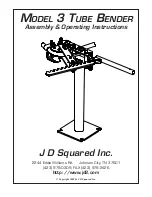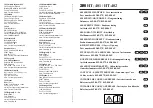
MADSEN Alpha OAE+ Screener User Manual
28
5.3.4
DPOAE test results
In Child Mode, when a test is completed, the Reward screen is displayed, regardless of the test result (screen shows balloons). The test
outcome is displayed. If Child Mode is not activated, the
Test result
screen is displayed immediately after the test is complete.
Pass/Clear Response
A single frequency Pass/Clear Response is determined by a statistical algorithm based on weighted averaging, which ensures high-sensitivity
detection. A Pass/Clear Response result for a single frequency indicates that the patient has normal outer hair cell function in the
corresponding frequency region of the cochlea during testing.
The number of frequencies that must pass in order to achieve A Pass/Clear Response result depends on the selected DPOAE protocol. See
DPOAE test protocols
Note: Retro-cochlear hearing loss cannot be detected by DPOAE testing.
Refer/No Clear Response
In Protocols 1, 2 and 5, a Refer/No Clear Response result indicates that in at least 3 frequency bands out of 6, no significant DPOAE response
could be detected.
In Protocols 3, 4 and 7, a Refer/No Clear Response result indicates that in at least 2 frequency bands out of 4, no significant DPOAE response
could be detected.
Protocol 6 does not generate an overall Pass/Clear Response or Refer/No Clear Response result.
The DPOAE result specifies each frequency tested. This result facilitates decisions concerning further procedures. A Pass/Clear Response at a
single frequency indicates near to normal outer hair cell function in the corresponding frequency region of the cochlea.
The common reasons for non-detection are noisy test conditions or a poor probe fit. In DPOAEs this condition is especially true for the
lowest frequencies. Low frequency Refer/No Clear Response with high frequency Pass/Clear Response is a strong indicator that test
conditions were not optimal. In this case, you should improve the test conditions and repeat the test.
















































